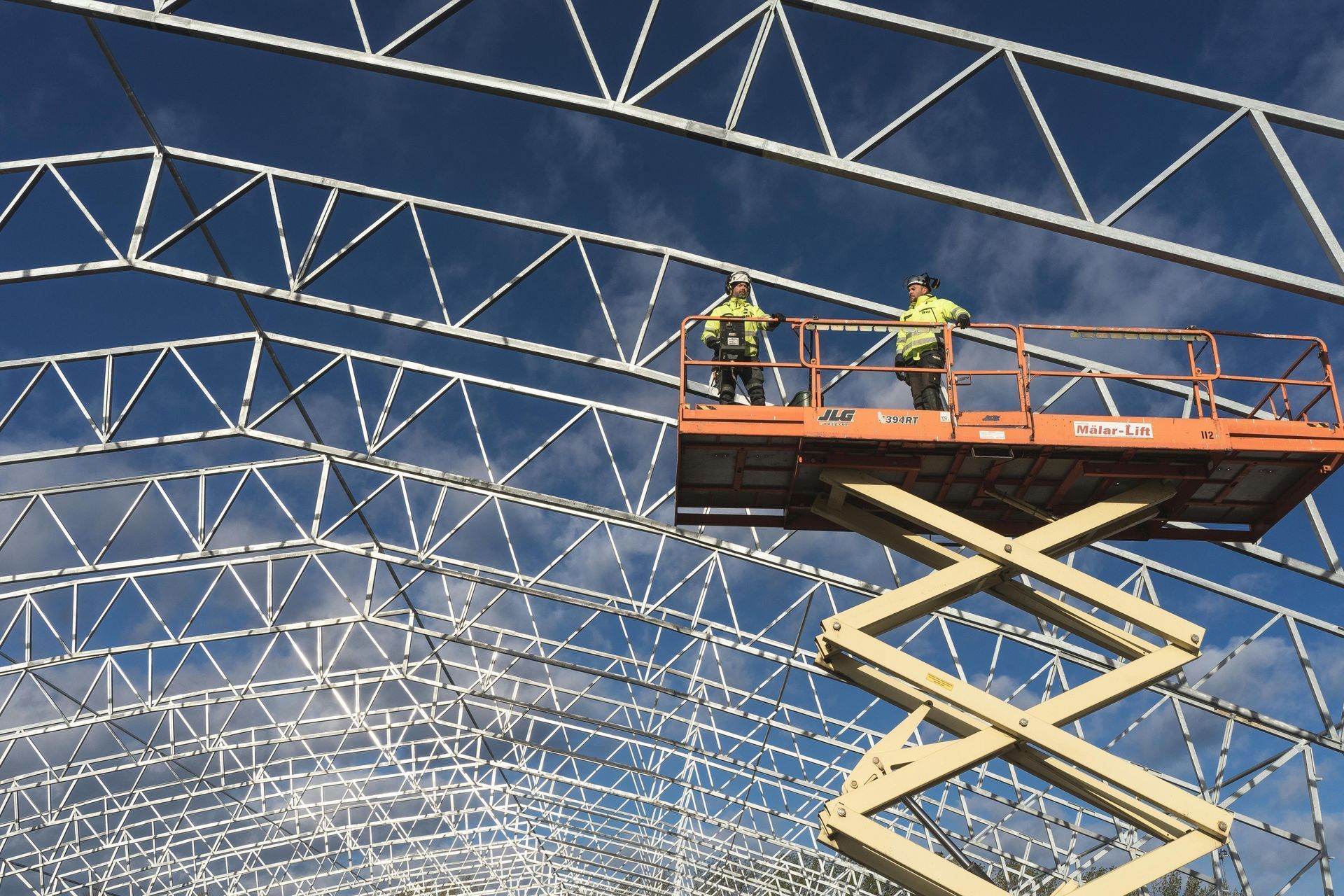Sustainable Construction Materials: Innovations and Benefits for Eco-Friendly Building
Exploring the Innovations and Environmental Benefits of Sustainable Construction Materials

The construction industry is undergoing a transformative shift towards sustainability, driven by the urgent need to reduce its environmental impact. This shift is particularly evident in the development and use of sustainable construction materials. These materials are designed to minimize environmental footprints, promote resource efficiency, and enhance the overall sustainability of building projects. In this comprehensive article, we will delve into the latest innovations in sustainable construction materials, explore their environmental benefits, and highlight exemplary projects that showcase their application. Additionally, we will discuss the commitment of forward-thinking companies to reducing their carbon footprint through the adoption of these eco-friendly materials.
The Need for Sustainable Construction Materials
The construction industry is a significant contributor to global carbon emissions and resource consumption. Traditional building materials like concrete and steel have substantial environmental impacts, from high energy use during production to considerable waste generation. Sustainable construction materials aim to address these challenges by offering alternatives that are more eco-friendly, durable, and efficient.
Reducing Carbon Emissions
One of the primary goals of sustainable construction materials is to reduce carbon emissions. This is achieved through various means, such as using recycled content, improving energy efficiency, and utilizing renewable resources. By lowering the carbon footprint of buildings, these materials contribute to the global effort to combat climate change.
Enhancing Resource Efficiency
Sustainable materials often incorporate recycled or renewable resources, reducing the need for virgin materials and the associated environmental impact. This approach not only conserves natural resources but also promotes a circular economy, where materials are reused and recycled rather than disposed of.
Promoting Health and Well-being
Many sustainable construction materials are designed to improve indoor air quality and occupant health. For example, low-VOC (volatile organic compound) paints and finishes reduce the release of harmful chemicals, creating healthier living and working environments.
Innovations in Sustainable Construction Materials
The construction industry is witnessing a surge of innovations in sustainable materials. These advancements are revolutionizing the way buildings are designed, constructed, and maintained. Here are some of the most promising innovations:
1. Cross-Laminated Timber (CLT)
Cross-laminated timber (CLT) is a revolutionary engineered wood product that offers significant environmental benefits. CLT panels are made by gluing layers of solid-sawn lumber together at right angles, creating a strong, lightweight, and versatile building material.
- Environmental Benefits: CLT is made from renewable wood resources and has a lower carbon footprint compared to concrete and steel. It also sequesters carbon, storing it for the life of the building.
- Projects: The Brock Commons Tallwood House in Vancouver, Canada, is a prime example of a high-rise building constructed with CLT. The 18-story structure showcases the material's strength and sustainability.
2. Recycled Concrete Aggregate (RCA)
Recycled concrete aggregate (RCA) is produced by crushing and reusing old concrete. This innovative material reduces the need for virgin aggregates and minimizes construction waste.
- Environmental Benefits: RCA conserves natural resources, reduces landfill waste, and lowers the carbon footprint of concrete production.
- Projects: The Eco-City in Tianjin, China, utilizes RCA in its infrastructure, demonstrating the material's effectiveness in large-scale urban projects.
3. Green Insulation Materials
Traditional insulation materials often have high embodied energy and can release harmful chemicals. Green insulation materials, such as cellulose, sheep's wool, and aerogel, offer eco-friendly alternatives.
- Environmental Benefits: These materials are made from renewable or recycled sources and have lower environmental impacts. They also improve energy efficiency, reducing heating and cooling demands.
- Projects: The Bullitt Center in Seattle, USA, known as the "greenest commercial building in the world," uses cellulose insulation made from recycled paper, enhancing its sustainability credentials.
4. Bioplastics and Biocomposites
Bioplastics and biocomposites are made from renewable biomass sources, such as plant starches, cellulose, and proteins. These materials can replace conventional plastics and composites in various construction applications.
- Environmental Benefits: Bioplastics and biocomposites are biodegradable, reducing plastic pollution. They also have lower carbon emissions compared to petroleum-based plastics.
- Projects: The EcoARK Pavilion in Taipei, Taiwan, constructed using Polli-Bricks made from recycled PET bottles, exemplifies the innovative use of bioplastics in construction.
5. Solar Tiles
Solar tiles integrate photovoltaic technology into building materials, allowing structures to generate renewable energy seamlessly.
- Environmental Benefits: Solar tiles reduce reliance on fossil fuels, lower greenhouse gas emissions, and promote energy independence.
- Projects: The Tesla Solar Roof project showcases residential homes equipped with solar tiles, combining aesthetics with sustainable energy generation.
Case Studies: Sustainable Construction Projects
To illustrate the real-world application and benefits of sustainable construction materials, let’s explore some notable projects that have successfully implemented these innovations.
1. The Edge, Amsterdam, Netherlands
Materials Used: Recycled steel, green insulation, and smart glass
Overview: The Edge is one of the most sustainable office buildings in the world, achieving a BREEAM score of 98.36%. The building incorporates various sustainable materials and technologies to minimize its environmental impact.
Environmental Benefits:
- Energy Efficiency: The use of green insulation and smart glass significantly reduces energy consumption for heating and cooling.
- Resource Conservation: Recycled steel reduces the need for virgin materials, lowering the building's carbon footprint.
- Sustainable Design: The building's design maximizes natural light, reducing the need for artificial lighting and improving indoor air quality.
2. Bosco Verticale, Milan, Italy
Materials Used: Cross-laminated timber (CLT), recycled concrete, and green roofs
Overview: Bosco Verticale, or Vertical Forest, is a pair of residential towers covered with trees and plants. This innovative project integrates nature into urban living, promoting biodiversity and sustainability.
Environmental Benefits:
- Carbon Sequestration: The extensive vegetation helps sequester carbon and improves air quality.
- Sustainable Materials: The use of CLT and recycled concrete reduces the environmental impact of construction.
- Energy Efficiency: The green roofs provide natural insulation, reducing energy demands for heating and cooling.
3. One Central Park, Sydney, Australia
Materials Used: Green walls, low-VOC materials, and recycled steel
Overview: One Central Park is a mixed-use building featuring a striking green façade. The project combines sustainable materials and innovative design to create a visually stunning and environmentally friendly building.
Environmental Benefits:
- Green Walls: The vertical gardens improve air quality and provide natural insulation.
- Low-VOC Materials: The use of low-VOC paints and finishes enhances indoor air quality and occupant health.
- Recycled Steel: Utilizing recycled steel reduces the need for virgin materials and lowers the carbon footprint.
The Environmental Impact of Sustainable Construction Materials
The adoption of sustainable construction materials offers numerous environmental benefits, contributing to a greener and more sustainable future. Here are some of the key impacts:
1. Reduced Carbon Footprint
Sustainable materials, such as CLT, recycled concrete, and green insulation, have significantly lower carbon footprints compared to traditional materials. By using renewable and recycled resources, these materials reduce greenhouse gas emissions and help combat climate change.
2. Conservation of Natural Resources
The use of recycled and renewable materials conserves natural resources, such as timber, minerals, and fossil fuels. This not only reduces the environmental impact of resource extraction but also promotes a circular economy, where materials are reused and recycled rather than discarded.
3. Improved Energy Efficiency
Many sustainable construction materials, such as green insulation and smart glass, enhance the energy efficiency of buildings. By improving thermal performance and reducing energy demands for heating and cooling, these materials lower the overall environmental impact of buildings.
4. Enhanced Indoor Air Quality
Sustainable materials often have low or zero VOC emissions, improving indoor air quality and occupant health. By reducing the release of harmful chemicals, these materials create healthier living and working environments.
Commitment to Sustainability
Forward-thinking companies in the construction industry are increasingly committing to sustainability by adopting and promoting the use of sustainable construction materials. This commitment is often reflected in their corporate strategies, project designs, and operational practices.
1. Sustainable Design and Construction Practices
Many companies are integrating sustainable design principles into their projects, prioritizing the use of eco-friendly materials and technologies. This approach not only reduces the environmental impact of buildings but also enhances their long-term performance and value.
2. Collaboration and Innovation
Collaboration with suppliers, architects, and engineers is crucial for advancing the use of sustainable materials. Companies are working together to develop and implement innovative solutions that address environmental challenges and promote sustainability.
3. Education and Advocacy
Educating clients, stakeholders, and the public about the benefits of sustainable construction materials is essential for driving adoption. Many companies are actively advocating for sustainable practices and raising awareness about the environmental impact of construction.
The Future of Sustainable Construction Materials
The future of sustainable construction materials looks promising, with ongoing innovations and increasing adoption driving positive change in the industry. Here are some trends and developments to watch:
1. Advanced Material Technologies
Emerging technologies, such as nanomaterials and biomimicry, are set to revolutionize sustainable construction materials. These advanced materials offer enhanced performance, durability, and sustainability, paving the way for more efficient and eco-friendly building solutions.
2. Circular Economy
The transition to a circular economy, where materials are continuously reused and recycled, will further enhance the sustainability of construction. This approach reduces waste, conserves resources, and minimizes the environmental impact of building projects.
3. Integration of Renewable Energy
The integration of renewable energy technologies, such as solar tiles and building-integrated photovoltaics (BIPV), will become more prevalent in sustainable construction. These technologies enable buildings to generate clean energy, reducing reliance on fossil fuels and lowering carbon emissions.
4. Increased Regulation and Standards
As sustainability becomes a priority for governments and regulatory bodies, stricter standards and regulations for construction materials are expected. This will drive the adoption of sustainable materials and practices, ensuring that new buildings meet high environmental performance criteria.
Conclusion
The rise of sustainable construction materials is transforming the construction industry, offering innovative solutions to reduce environmental impact and promote resource efficiency. By adopting eco-friendly materials such as cross-laminated timber, recycled concrete aggregate, and green insulation, the industry can achieve significant environmental benefits, including reduced carbon emissions, conservation of natural resources, and improved indoor air quality.
Exemplary projects like The Edge, Bosco Verticale, and One Central Park demonstrate the real-world application and benefits of these materials, showcasing the potential for sustainable construction to create a greener and more sustainable future. As the industry continues to innovate and commit to sustainability, the adoption of sustainable construction materials will play a crucial role in addressing global environmental challenges and advancing the goals of a circular economy.
#SustainableConstruction #EcoFriendlyBuilding #GreenMaterials #ConstructionInnovation #CarbonFootprint #RenewableResources #EnergyEfficiency #HealthyBuildings #CircularEconomy #FutureOfConstruction #GreenBuilding #EnvironmentalImpact #SustainableDesign #ConstructionTech #EcoBuilding #RecycledMaterials #SustainableLiving #GreenArchitecture #CleanEnergy #BuildingSustainability #InnovationInConstruction #EcoTech #SustainableProjects #SustainableDevelopment #BuildingGreen










